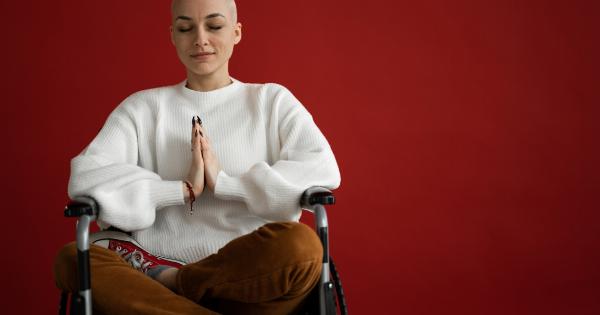Every year, World Day of Empowerment for Persons with Disabilities is observed on December 3rd. This international observance aims to promote the rights and well-being of people with disabilities and raise awareness about the challenges they face.
One of the essential aspects of empowering people with disabilities is providing them with access to healthcare services. Physiotherapists play an essential role in ensuring that people with disabilities can lead a healthy and independent life.
In this article, we will discuss how physiotherapists can help people with disabilities.
Understanding Physiotherapy for People with Disabilities
Physiotherapy is a branch of healthcare that addresses physical impairments, injuries, and disabilities.
It involves the assessment, diagnosis, and treatment of conditions that affect the functioning of the musculoskeletal system, nervous system, and cardiorespiratory system. Physiotherapists use exercise, manual therapy, and other therapeutic techniques to alleviate pain and improve the function and range of motion of the affected areas.
Physiotherapy can help people with disabilities by addressing the physical challenges they face, such as impaired mobility, weakness, and muscle stiffness.
Physiotherapists can help people with disabilities maintain their independence, improve their quality of life, and reduce their dependence on others.
Types of Disabilities
There are different types of disabilities that physiotherapists can help manage. Some of the most common disabilities include:.
1. Musculoskeletal Disabilities
Musculoskeletal disabilities refer to conditions that affect the bones, joints, muscles, and connective tissues of the body. Examples of musculoskeletal disabilities include arthritis, osteoporosis, and back pain.
Physiotherapists can help people with musculoskeletal disabilities by using exercise therapy, manual therapy, and other techniques to relieve pain, improve mobility, and strengthen the affected muscles.
They may also recommend assistive devices such as braces, crutches, or wheelchairs to assist with mobility.
2. Neurological Disabilities
Neurological disabilities refer to conditions that affect the nervous system, such as spinal cord injuries, multiple sclerosis, Parkinson’s disease, and strokes.
These disabilities can cause various impairments, including muscle weakness, spasticity, tremors, and difficulties with coordination and balance.
Physiotherapists can help people with neurological disabilities by using exercises and mobility aids to improve their strength, flexibility, and coordination.
They may also provide education on how to manage their symptoms and prevent further complications.
3. Cardiovascular Disabilities
Cardiovascular disabilities refer to conditions that affect the heart and blood vessels, such as heart disease, stroke, and hypertension. These disabilities can cause various limitations, such as fatigue, dyspnea, and reduced endurance.
Physiotherapists can help people with cardiovascular disabilities by designing exercise programs that can improve their cardiovascular fitness, reduce their risk of complications, and increase their endurance.
They may also provide education on lifestyle modifications such as diet, exercise, and smoking cessation to prevent further complications.
4. Respiratory Disabilities
Respiratory disabilities refer to conditions that affect the lungs and airways, such as asthma, chronic obstructive pulmonary disease, and cystic fibrosis.
These disabilities can cause various impairments, such as shortness of breath, coughing, and reduced lung function.
Physiotherapists can help people with respiratory disabilities by using breathing exercises, airway clearance techniques, and other therapeutic interventions to reduce their symptoms, improve their lung function, and prevent further complications.
How Physiotherapists Can Help People with Disabilities
Physiotherapists can help people with disabilities in various ways, such as:.
1. Assessing the Physical Functioning of the Person with Disabilities
Physiotherapists can assess the physical functioning of people with disabilities to identify any impairments in their ability to move, walk, or perform daily activities.
They can use this information to develop a personalized treatment plan that addresses the specific needs of the person with disabilities.
2. Designing and Implementing Exercise Programs
Physiotherapists can design and implement exercise programs that are tailored to the individual needs of people with disabilities. These exercise programs can improve their strength, flexibility, and endurance, and reduce their risk of complications.
Physiotherapists can use different forms of exercise therapy, such as resistance training, aerobic conditioning, and stretching, to achieve these objectives. They can also provide guidance on how to perform exercises safely to prevent injury.
3. Providing Manual Therapy Techniques
Physiotherapists can use different forms of manual therapy, such as massage, mobilization, and manipulation, to alleviate pain and discomfort caused by physical impairments.
These techniques can also improve the range of motion of the affected areas and enhance the overall functioning of the body.
4. Recommending Assistive Devices and Mobility Aids
Physiotherapists can recommend assistive devices and mobility aids that can help people with disabilities perform daily activities with greater ease. These devices can include braces, splints, crutches, wheelchairs, and walkers.
Physiotherapists can also provide education on how to use these devices safely and effectively to prevent further complications.
5. Providing Education and Support
Physiotherapists can provide education and support to people with disabilities on how to manage their symptoms, prevent further complications, and improve their overall health and well-being.
They can also provide emotional support and encouragement to help them cope with the challenges of living with a disability.
Conclusion
Physiotherapists play an essential role in helping people with disabilities lead a healthy and independent life. They can use different forms of therapy and interventions to address the specific needs of people with different types of disabilities.
Physiotherapy can help people with disabilities maintain their independence, improve their quality of life, and reduce their dependence on others.





























